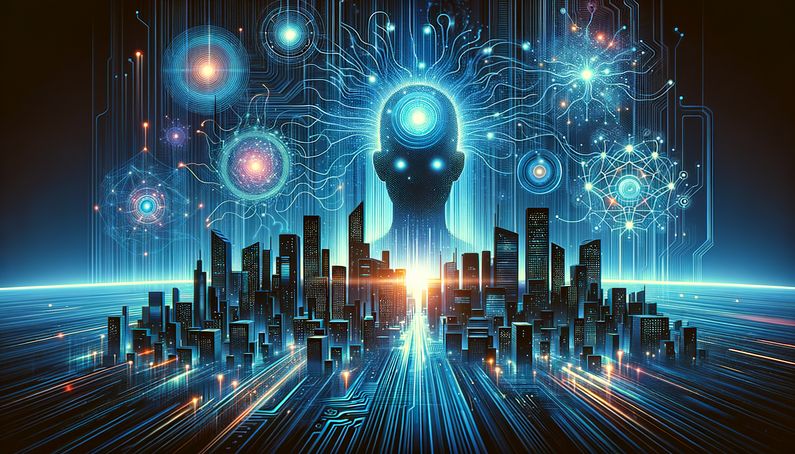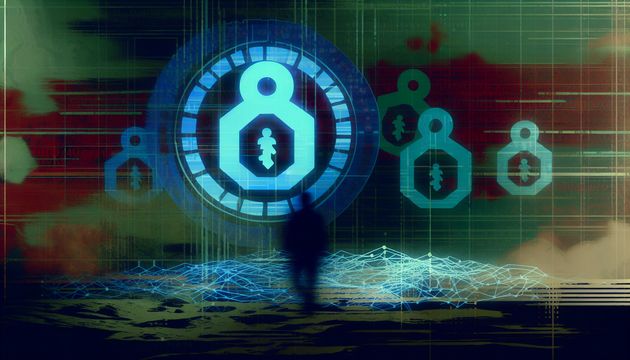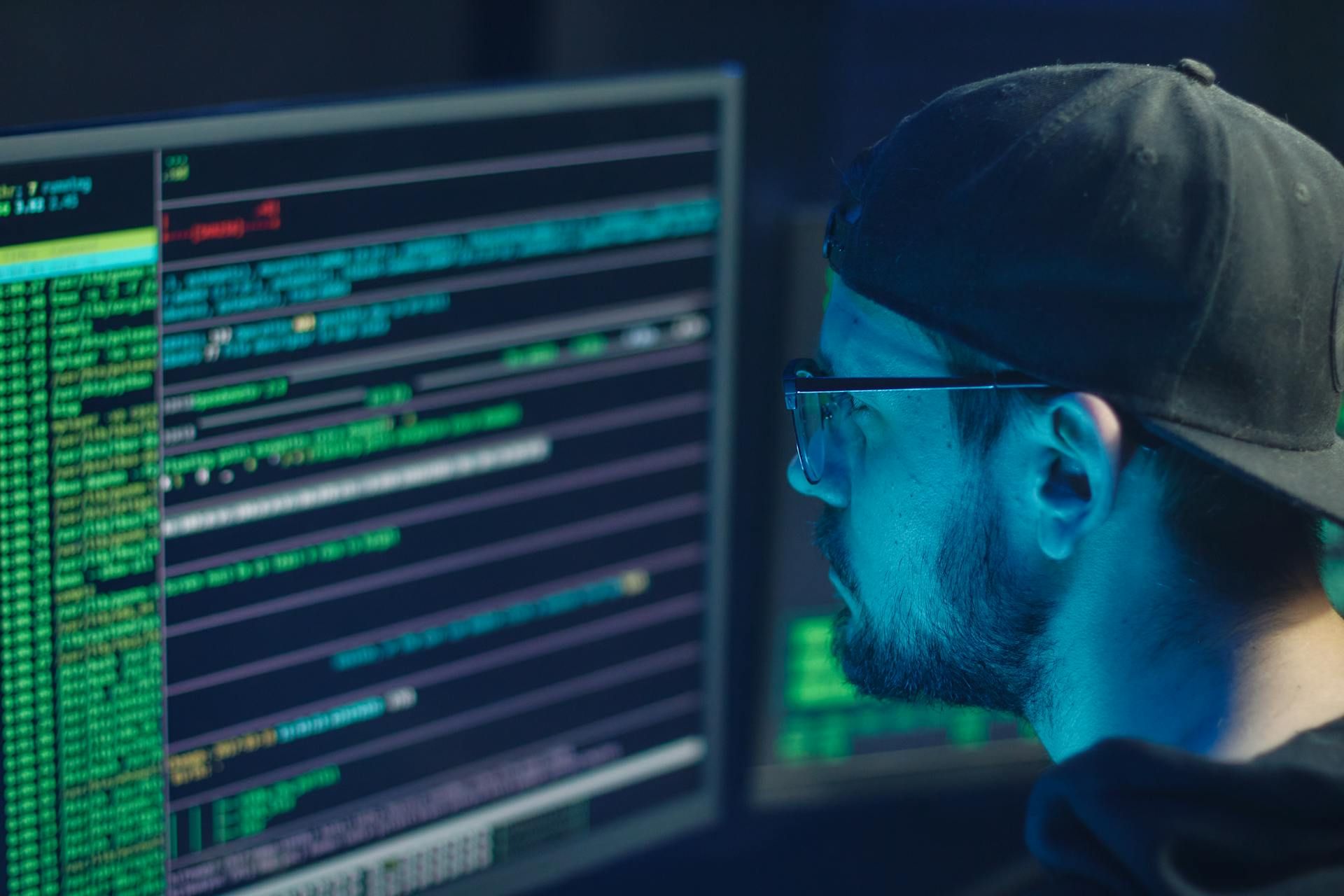
Cybersecurity Trends to Watch in 2025
As we step into 2025, the cybersecurity landscape is undergoing a profound transformation driven by advancements in artificial intelligence (AI) and the looming threat of quantum computing. AI has become a double-edged sword in cybersecurity, offering unprecedented capabilities for threat detection and response while simultaneously empowering cybercriminals with sophisticated tools for launching attacks. The integration of AI into cybersecurity systems has led to the development of autonomous defense platforms and multi-agent systems that enhance scalability and adaptability (Nature). However, this evolution also introduces new challenges, such as ensuring the reliability and security of these systems and addressing ethical concerns related to AI decision-making.
Simultaneously, the advent of quantum computing poses a significant threat to current cryptographic systems. Quantum computers, with their ability to solve complex mathematical problems, threaten to render traditional encryption methods obsolete. This has spurred the development of post-quantum cryptography (PQC), which aims to create algorithms resistant to quantum attacks (Forbes). As organizations prepare for a post-quantum world, they must navigate the complexities of transitioning to PQC, which involves updating systems, ensuring cryptographic agility, and training the workforce.
In this article, we explore the key trends in AI-powered cybersecurity and the implications of quantum computing for cryptographic systems. We delve into the advancements, challenges, and future directions in these areas, providing insights into how organizations can adapt to the evolving threat landscape.
AI-Powered Cybersecurity and Threats
The Evolution of AI in Cybersecurity
Artificial intelligence (AI) has dramatically transformed the cybersecurity landscape, enabling both defenders and attackers to operate at unprecedented levels of sophistication. Unlike traditional security measures, AI-driven systems can process vast amounts of data in real-time, identify patterns, and predict potential threats before they occur. These capabilities are particularly critical as cyber threats become increasingly complex and adaptive.
AI’s integration into cybersecurity has led to the development of autonomous defense platforms capable of real-time threat mitigation. For instance, AI systems now engage in machine-versus-machine combat, where adversarial AI attempts to exploit vulnerabilities while defensive AI counters these attacks. This evolution is reshaping the roles of human analysts, who are now focusing on more complex tasks as AI handles routine threat detection and response.
Multi-Agent AI Systems in Cybersecurity
One of the most significant advancements in AI-powered cybersecurity is the rise of multi-agent systems. These systems consist of multiple AI agents working collaboratively to detect, analyze, and respond to cyber threats. Unlike single-agent systems, multi-agent architectures can address complex, multi-faceted attacks by dividing tasks among specialized agents. For example, one agent might focus on anomaly detection, while another handles threat mitigation.
Multi-agent systems also enhance scalability, allowing organizations to adapt to growing cybersecurity demands. However, they introduce new challenges, such as the need for seamless communication and coordination among agents. As these systems become more prevalent, ensuring their reliability and security will be paramount.
AI-Powered Attacks and Offensive Capabilities
While AI has bolstered defensive measures, it has also empowered cybercriminals to launch more sophisticated attacks. AI-powered cyberattacks leverage machine learning algorithms to identify vulnerabilities, automate exploit development, and execute highly targeted campaigns. For instance, generative AI can create convincing phishing emails or deepfake videos, making it increasingly difficult for traditional security measures to detect malicious activity.
One alarming trend is the use of AI to automate social engineering attacks. By analyzing publicly available data, AI can craft personalized messages that are more likely to deceive targets. Additionally, AI-driven malware can adapt its behavior in real-time to evade detection, posing significant challenges for cybersecurity professionals.
Real-Time Threat Detection and Response
AI’s ability to analyze large datasets in real-time has revolutionized threat detection and response. Machine learning algorithms can identify anomalies and potential threats by comparing current activity to historical data. This capability is particularly valuable for detecting zero-day exploits and advanced persistent threats (APTs), which often go unnoticed by traditional security measures.
Real-time threat detection systems also reduce false positives, enabling security teams to focus on genuine threats. For example, AI can distinguish between benign and malicious activities by analyzing patterns and context. This not only improves the efficiency of security operations but also enhances overall organizational resilience.
Ethical and Operational Challenges of AI in Cybersecurity
Despite its advantages, the integration of AI into cybersecurity presents several ethical and operational challenges. One major concern is the potential for AI systems to make biased or erroneous decisions, particularly when trained on flawed or incomplete data. Such errors can lead to false identifications or discriminatory outcomes, undermining trust in AI-driven security measures.
Another challenge is the risk of over-reliance on AI, which can result in a lack of human oversight. High-stakes decision-making situations require a balance between automation and human judgment to ensure accountability and ethical compliance. Additionally, implementing AI systems often requires substantial computational resources and infrastructure, which may be cost-prohibitive for smaller organizations.
The Geopolitical AI Arms Race
The increasing adoption of AI in cybersecurity has sparked a geopolitical arms race, with nation-states and non-state actors leveraging AI to gain strategic advantages. This trend has blurred the lines between nation-state and financially motivated cybercriminals, as both groups adopt similar tactics and technologies.
One of the most concerning aspects of this arms race is the proliferation of zero-day exploits and sophisticated backdoors designed to evade detection for extended periods. To counter these threats, organizations must adopt proactive measures, such as real-time threat detection and automated incident response strategies. The stakes have never been higher, as AI-driven cyber strategies redefine the global security landscape.
AI Governance and Accountability
As AI becomes increasingly integral to cybersecurity, establishing robust governance frameworks is essential. These frameworks should balance autonomous operation with human oversight, ensuring that AI-driven decisions are transparent and accountable. For example, organizations can implement validation systems to verify the integrity of AI models and establish clear accountability measures for security outcomes.
Cross-border collaboration is also crucial for addressing the global nature of cyber threats. Initiatives like Collaborative Automated Course of Action Operations (CACAO) aim to develop cross-sector AI defense networks, enabling organizations to share threat intelligence and coordinate responses effectively.
The Role of AI in Protecting Critical Infrastructure
Critical infrastructure sectors, such as energy, healthcare, and transportation, are increasingly targeted by cybercriminals. AI plays a vital role in safeguarding these sectors by providing advanced threat detection and response capabilities. For instance, predictive analytics can identify potential vulnerabilities and recommend proactive measures to mitigate risks.
However, protecting critical infrastructure also requires addressing unique challenges, such as the integration of AI into legacy systems and the need for sector-specific security protocols. As AI continues to evolve, its role in critical infrastructure protection will become even more significant.
AI-Driven Collaboration and Information Sharing
Collaboration and information sharing among organizations are essential for combating AI-powered cyber threats. AI can facilitate this process by analyzing threat intelligence feeds and correlating data from various sources. This enables organizations to develop a “common defense” perimeter, enhancing their collective resilience against cyberattacks.
For example, AI-driven platforms can automatically share threat indicators and mitigation strategies across organizations, reducing response times and improving overall security. As collaboration becomes more widespread, it will play a crucial role in addressing the challenges posed by AI-powered cyber threats.
Future Trends in AI-Powered Cybersecurity
Looking ahead, AI is expected to drive several key trends in cybersecurity. These include the development of autonomous intelligent systems capable of learning and adapting to new threats, as well as the increased use of generative AI for both offensive and defensive purposes. Additionally, AI-driven robotics and collaborative systems will play a growing role in enhancing productivity and security across various industries.
As these trends unfold, organizations must stay ahead of the curve by investing in AI research and development, implementing robust governance frameworks, and fostering cross-sector collaboration. By doing so, they can harness the full potential of AI while mitigating its associated risks.
Quantum Computing and Post-Quantum Cryptography
The Threat of Quantum Computing to Current Cryptographic Systems
Quantum computing, leveraging principles of quantum mechanics, poses a significant challenge to classical cryptographic systems. Algorithms such as Shor’s algorithm can efficiently factorize large integers and compute discrete logarithms, which are the foundational principles behind widely used cryptographic protocols like RSA and ECC. This capability renders these traditional encryption methods vulnerable to quantum attacks. According to a 2024 article in Nature, the transition to quantum-resistant algorithms is essential, as billions of devices rely on cryptographic systems that will become obsolete once quantum computers reach cryptanalytically relevant capabilities.
The timeline for quantum computers to achieve this level of power, often referred to as “Q-Day,” remains uncertain. However, organizations must act proactively to mitigate risks. The National Institute of Standards and Technology (NIST) has identified quantum-vulnerable cryptographic standards and is actively working towards transitioning to quantum-resistant alternatives (NIST IR 8547).
Post-Quantum Cryptography: A New Era of Encryption
Post-Quantum Cryptography (PQC) refers to cryptographic algorithms designed to resist attacks from quantum computers. These algorithms are based on complex mathematical problems that are currently infeasible for quantum computers to solve. Common approaches include lattice-based cryptography, hash-based signatures, and multivariate polynomial equations (Forbes).
Standardization Efforts and Progress
NIST has been leading the PQC standardization process since 2016. In August 2024, NIST finalized its first set of post-quantum encryption standards, including lattice-based and hash-based algorithms (National Quantum Initiative). These standards are now available for immediate implementation, enabling organizations to begin transitioning their cryptographic systems.
Challenges in Adoption
Transitioning to PQC is a complex process that involves updating existing systems, ensuring cryptographic agility, and addressing performance concerns. As highlighted by PostQuantum, organizations must invest in infrastructure upgrades and workforce training to achieve crypto-agility and safeguard digital assets.
Preparing for a Post-Quantum World
Organizations must adopt a proactive approach to prepare for the quantum era. Key steps include:
Comprehensive Cryptographic Audits
Conducting audits to identify quantum-vulnerable encryption methods is a critical first step. This allows organizations to prioritize systems for upgrades to quantum-resistant algorithms (Forbes).
Risk Assessment and Mitigation
Evaluating the potential impact of quantum decryption on sensitive data helps organizations prioritize their resources. High-risk systems and data should be transitioned to PQC as a priority.
Workforce Training
As noted by Bitdefender, training staff to understand and manage post-quantum cryptographic protocols is essential. This ensures smooth integration of new algorithms and reduces the risk of implementation errors.
The Role of Hardware Security Modules (HSMs) in PQC
Hardware Security Modules (HSMs) are critical in implementing PQC. These devices provide secure environments for cryptographic operations, ensuring the integrity of quantum-resistant algorithms. In 2025, the adoption of quantum-safe HSMs is expected to rise significantly, as organizations seek to protect sensitive data against emerging quantum threats (Sectigo).
Enhancing Cryptographic Agility
HSMs enable organizations to quickly update cryptographic protocols as new PQC standards emerge. This agility is crucial in a rapidly evolving threat landscape.
Challenges in Integration
Despite their benefits, integrating HSMs into existing systems can be challenging. Organizations must ensure compatibility with legacy infrastructure and address potential performance bottlenecks.
Long-Term Implications for Cybersecurity
The transition to PQC is not just a technical challenge but also a strategic one. It requires collaboration between governments, industry, and academia to develop and implement effective solutions. According to a 2024 article in Nature, the process will span decades, as billions of devices need to be upgraded or replaced.
Regulatory and Compliance Considerations
Governments and regulatory bodies must establish clear guidelines for PQC adoption. This includes setting timelines for transitioning to quantum-resistant algorithms and ensuring compliance across industries.
Innovation in Cryptographic Research
The PQC transition is driving innovation in cryptographic research. New algorithms and techniques are being developed to address the unique challenges posed by quantum computing. This research will shape the future of cybersecurity, enabling organizations to stay ahead of emerging threats.
By addressing these challenges and leveraging advancements in PQC, organizations can secure their digital assets and maintain trust in an increasingly interconnected world.
Conclusion
In conclusion, the cybersecurity landscape in 2025 is characterized by rapid technological advancements and emerging threats that require organizations to adopt innovative strategies and solutions. AI has revolutionized cybersecurity by enabling real-time threat detection and response, but it also presents new challenges, such as ethical concerns and the risk of over-reliance on automated systems. As AI continues to evolve, organizations must balance automation with human oversight to ensure accountability and ethical compliance (Bitdefender).
The impending threat of quantum computing necessitates a proactive approach to cryptographic security. The transition to post-quantum cryptography is a complex but essential process to safeguard digital assets against quantum attacks. Organizations must conduct comprehensive cryptographic audits, prioritize high-risk systems for upgrades, and invest in workforce training to achieve crypto-agility (Sectigo).
Ultimately, the future of cybersecurity will be shaped by the ability of organizations to adapt to these technological shifts and collaborate across sectors to develop robust defense mechanisms. By embracing AI advancements and preparing for the quantum era, organizations can enhance their resilience against cyber threats and maintain trust in an increasingly interconnected world.



